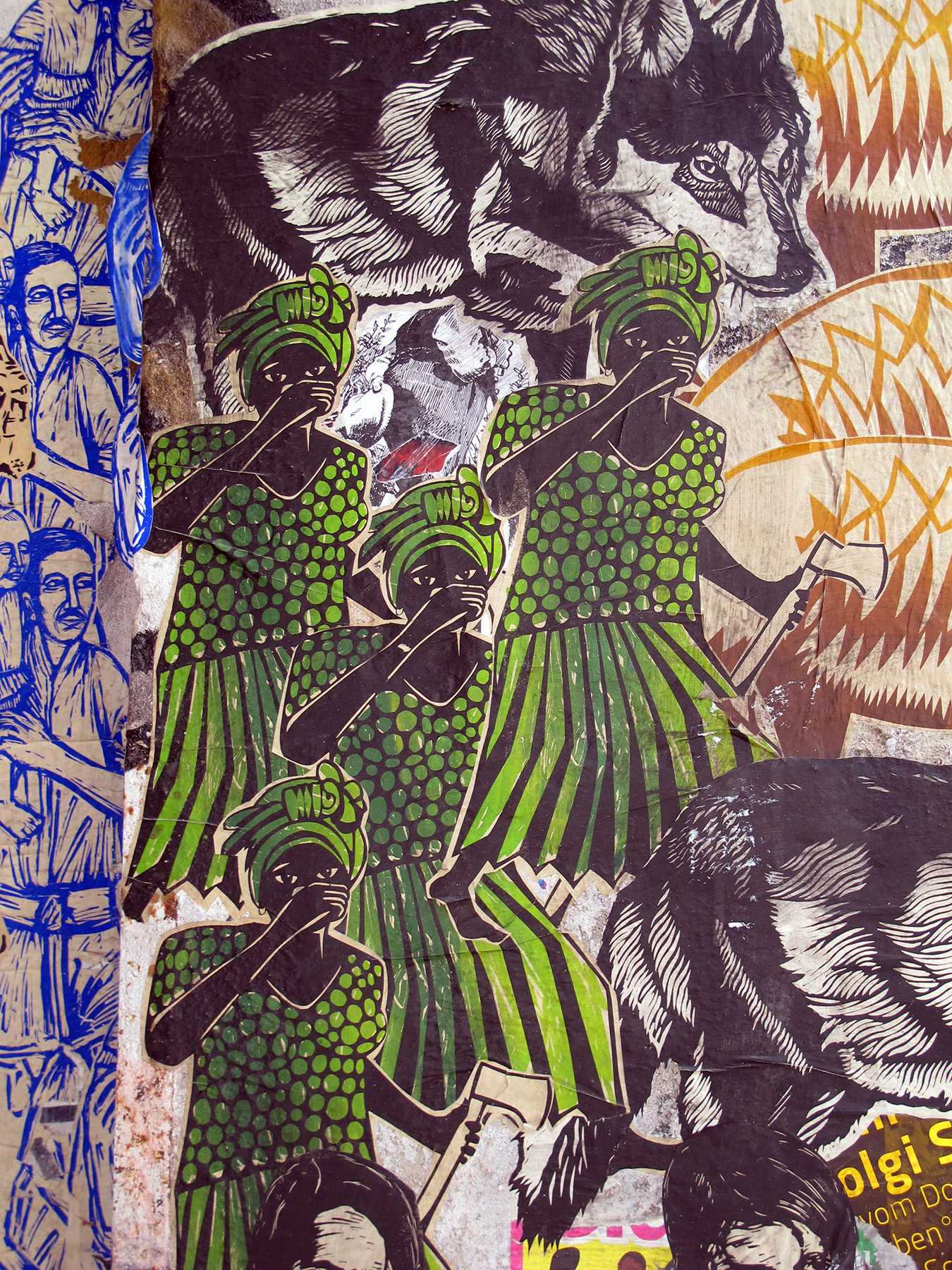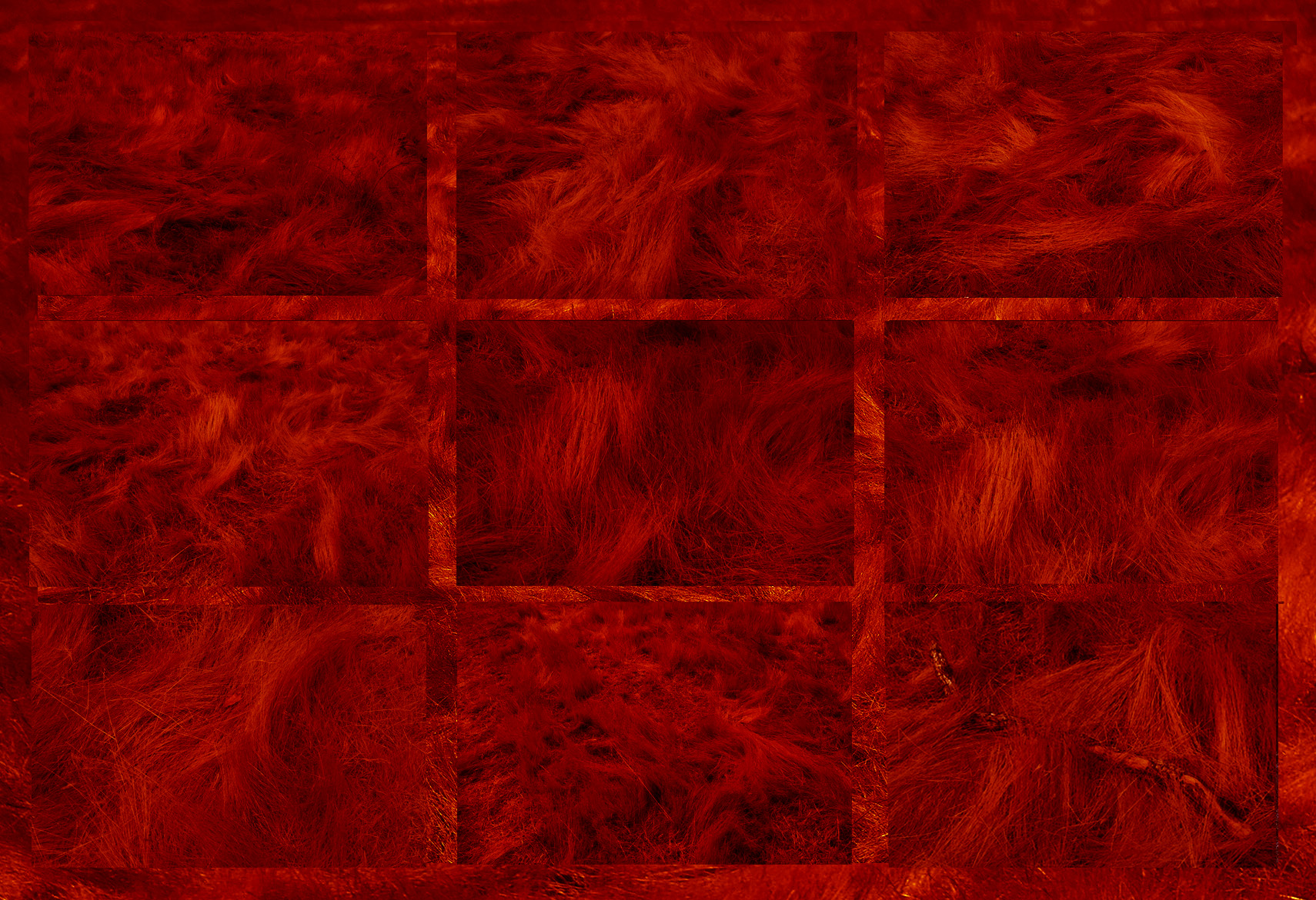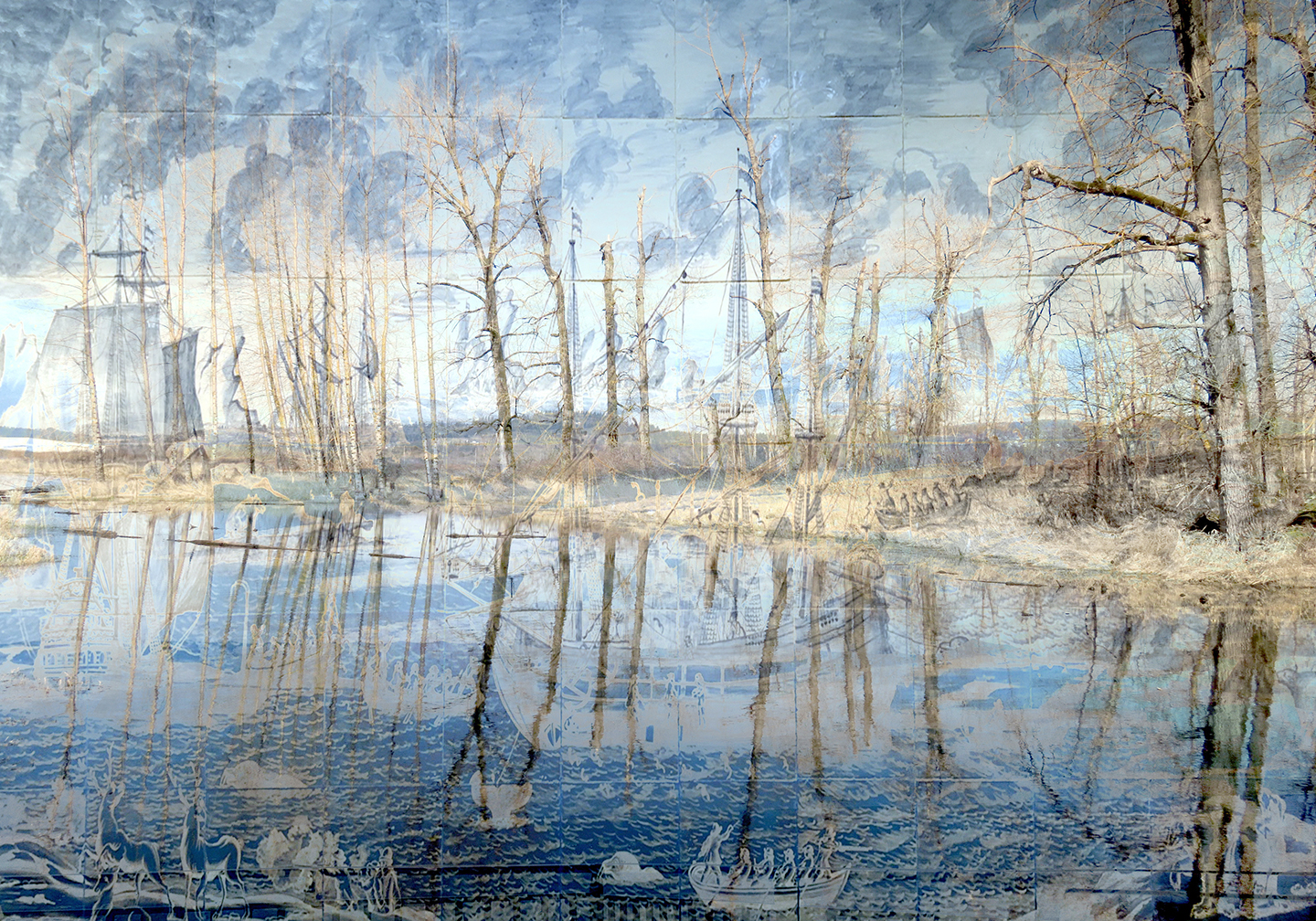One of the pleasures of writing an independent blog is the fact that I can cover topics I know absolutely nothing about, simply because I find them fascinating. You, of course, have a similar choice: you can explore new territory or decide to skip it, since it might involve some effort to listen in new ways. And listen it shall be: this week I am introducing a number of different artists who employ sound in order to map aspects of our world as linked to the past, present and future, or to capture ephemeral processes.
What they all have in common is that they are art – devised as sound sculptures in some cases, associated with visual images (painted, sculpted or digitally created) in others, or plain compositions using sound collected from the environment or electronically generated. I cannot tell if I am more fascinated by some of the underlying ideas, or the art works that result from the ideas. I guess it varies.
Today I will start with two artists who are about the present and the past. Wednesday’s segment will introduce two artists who explore the linkage between sound and psychological processes extending into the future. The two installments are meant as a package, examining working with sound from four different angles. I don’t expect anyone to listen to any of the links in full – that would cost a lot of time – but a bit of sampling will give you a taste of what’s out there and maybe instill curiosity for more.

Composer Bill Fontana is one of the pioneers of sound art in the U.S. with a career spanning five decades and taking him to international acclaim. He collects site-specific sounds and generates sound configurations from those recordings that reflect aspects of the site and are intended to shape our visual interaction with the site or visual surrounding. Working with acoustic microphones, underwater sensors (hydrophones) and structural/material sensors (accelerometers) that sample the environmental sounds, he creates “sculptures” with the input, musical transformations that are centrally experienced by the listener.

For example, he has composed subtle variations of the music of the Golden Gate Bridge, a live audio/video installation created for its 75th anniversary in 2012, now in the collection of SF MOMA. Here is a link to some of his acoustical visions – the bridge piece can be heard in the third segment.

Another sound sculpture can be found in Rome, in the entry hall of the National Museum of 21st Century Art. He connects Zaha Hadid’s architecture of the building with the acoustic, harmonic and rhythmical qualities of the water that has run in Roman aqueducts since time immemorial. Well, since Roman times. Ok, 2000 years.
You can hear the sculptural sound and the underlying source here.

And here is a link to one of his most recent projects, Sonic Dreamscapes that connects sounds of the Miami seascape under threat of climate change to our auditory cortex, making the listener aware of the fragility of our world. This multimedia installation was installed in Miami Beach in 2018.
The installation cycle begins during the day with individually recurring auditory recordings answering each other from different spatial points in SoundScape Park. By afternoon, the “musical vocabulary” will grow as additional sounds are added to the repertoire. As the evening approaches, environmentally inspired abstract videos will emerge on the video wall, allowing visitors to experience a myriad of floating sounds and meditative images.



Where Fontana is about connecting us to the sound of places with an eye on change across time, Satch Hoyt is a sound artist concerned with the sounds of people, their movements across space in the past and preserved echos in contemporary music. In addition to actual sculptures that interact with sound installations (link here, scroll down and click on the strips below the images to get to the sound,) Hoyt has an ongoing multi-media project in the works, Afro-Sonic Mapping, which traces specific traditional African music from centuries ago to the contemporary musical styles of the African diaspora.


The project connects archival recordings of African music from Congo and Angola, collected by European anthropologists of the late 1800s and found in Berlin’s ethnology museum, to the urban music in the suburbs of large contemporary Portuguese and Brazilian cities. Turns out, the musical patterns transmigrated to today’s urban music, linking Luanda, Lisbon and Salvador da Bahia, or Dakar, Cali and Lima. With examination of aural histories, interviews and musical exploration with local African musicians to whom Hoyt brought the old recordings, and with collaboration with modern musicians across continents, he re-imagined the sounds, rhythms and melodies, rarely recorded in bygone periods of colonialism and slave trade.


Two years ago the Haus der Kulturen der Welt in Berlin offered the first large presentation of the project. Paintings, lectures, videos and 2 concerts attracted big crowds across a full week. Here is some of the music interspersed with an explanatory interview with the artist. The focus was on the lusophone triangle, between the large Portuguese speaking regions of the word, Portugal, its former African colonies (Angola, Mozambique) and Brazil, mapping the sounds, back and forth. I am not sure that Hoyt’s goal to “bring back the music to the places of origin where it was recorded and create some kind of sonic restitution in a postcolonial world, a transformation,” can be accomplished, I certainly would not know how to judge that.
But I find the idea of mapping the network of historical pathways of rhythms or melodies which were, other than language, the only things that could be brought and kept during torturous migrations, fascinating. Musicians acting as archeologists, digging out old artifacts under layers of later civilizations. Sounds of spaces or historical sounds, recorded and re-coded for us to sharpen our listening, to form connections – art as mediator.


Photographs today are of San Francisco, Miami and Berlin, respectively; the Democratic Republic of Congo has to wait for another life time….


















